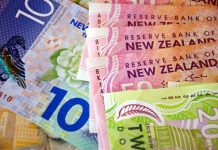The second estimate of second quarter real GDP growth was revised up 0.2 percentage points (pp) to 3.0% quarter-over-quarter annualized (q/q) – slightly above the consensus forecast.
Looking under the hood, an upward revision to consumer spending (2.9% q/q vs. prior 2.3% q/q) was largely responsible for last quarter’s upgrade. Spending on both goods (3.0% q/q vs. prior 2.5% q/q) and services (2.2% q/q vs prior 2.8% q/q) were revised higher. Meanwhile, non-residential investment saw a modest downward revision to 4.6% q/q, thanks to downgrades in both equipment spending (10.6% q/q vs. prior 11.6% q/q) and intellectual property products (2.6% q/q vs. prior 4.5% q/q).
Government spending was reported to have expanded by 2.7% q/q, with healthy gains from both the federal (+3.3% q/q) and state & local (2.3% q/q) level.
Net exports shaved 0.8 pp from Q2 growth (unchanged from the prior estimate), though this was entirely offset by an equal gain in inventory investment.
Real Gross Domestic Income (GDI) rose by 1.3% q/q in the second quarter, matching Q1’s gain. Corporate profits were up 7.0% (annualized) or $57.6 billion after accounting for inventory valuation and capital consumption adjustments. The ratio of corporate profits to nominal GDP ticked up 0.1 pp to 12.0%.
- The average of GDP and GDI, a supplemental estimate of domestic production, rose 2.1% q/q in the second quarter or slightly weaker than the pace of growth suggested by the expenditure GDP data.
Key Implications
The Bureau of Economic Analysis’ second estimate of Q2 GDP saw a very modest upward revision relative to the preliminary reading. Overall, the economy continued to show ongoing resilience through the second quarter, as evidenced by the breadth of gains across domestic drivers. Final domestic demand (i.e., the sum of consumer spending, fixed investment, and government outlays) rose by a healthy 2.9% in Q2 and averaged 2.8% through the first half of the year – largely unchanged from H2-2023’s 3.1%.
That said, there was at least some evidence in this morning’s report to suggest that the economy’s resilience will soon start to wane. For starters, the uptick in Q2 PCE was driven by a rebound in goods spending, which we do not expect to continue, particularly given the recent softening in labor market fundamentals. Second, the sharp acceleration in equipment outlays can largely be traced back to a surge in aircraft purchases last quarter and is unlikely to be repeated in Q3. Lastly, the gain in federal spending was the result of a notable bump in national defense outlays, which is also likely to mean revert over the coming quarters. All that to say, we appear to be in a goldilocks scenario where growth is likely to gradually edge lower through the second half of the year, allowing inflation to drift closer to the Fed’s 2% target. This should enable the FOMC to cut its policy rate by at least 75 basis points by year-end.














